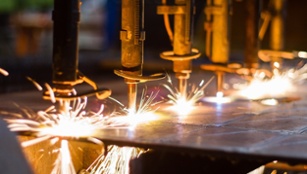
How To Hit Target Costs With Flexible Custom Machining Services
June 17, 2016
 High machining costs are a drain on your budget. However, going with the cheapest supplier usually ends up costing you more in production line downtime and machining defects.
High machining costs are a drain on your budget. However, going with the cheapest supplier usually ends up costing you more in production line downtime and machining defects.
Product quality and lead times are essential. At the same time, you don’t want to pay more than you have to. You need a supplier that balances quality and delivery with cost-saving strategies.
Your overall savings, rather than a supplier’s sticker price, are most important for meeting budget goals. Learn how to hit target costs with an expert metal manufacturer’s flexible custom machining services.
Take Advantage Of Your Supplier’s Resources
Larger suppliers tend to have more resources available. For OEMs, this means more opportunities to save on costs. A metal manufacturer with sufficient funding purchases the machinery it needs to make custom machining processes most efficient.
Even if a piece of equipment is only five years old, the right supplier will evaluate it against newer models and work with the equipment that saves customers the most money.
Your manufacturer should also partner with its suppliers to learn more about cost-effective methods for machining parts. Material suppliers help your manufacturer understand new materials, pick the right coolant and machine under specific environmental conditions. A metal manufacturer should meet with its suppliers regularly, preferably at least once a week.
Consult With A Machining Expert
A skilled manufacturer offers its expertise in addition to metal machining services. Through product audits, an expert can help you reduce machining costs by advising you on process and design techniques. For example, the following strategies help you save money:
Reduce Wall Thickness
Minimizing wall thickness can save you significantly on cost. However, it’s important not to overdo it. A wall that’s too thin may actually increase your costs because it doesn’t hold up as well during manufacturing processes.
Limit Depth
As much as possible, try to design shallow holes and eliminate unneeded holes. Rib depth should be no deeper than 2 inches, and you should try to eliminate unnecessary undercuts in your metal part designs.
Minimize Small Features
Machining small features takes more time because they’re difficult to mill. Unless certain small features are absolutely necessary for your product to function, eliminate them to reduce costs.
Avoid Text
Recessed text on your metal parts costs you additional money because it’s time-consuming to machine. Reducing text is especially important if you’re using expensive materials – a single mistake on an expensive material dramatically adds to your costs.
Throughout your relationship, your supplier should be flexible and accommodating to your needs. It’s not uncommon for an OEM to call its supplier in the afternoon and say it’s sending a shipment of fixtures that need to be machined the next morning. Most of the time, your supplier should be able to meet this request. With flexible custom machining services, your business receives the attention it needs to thrive.